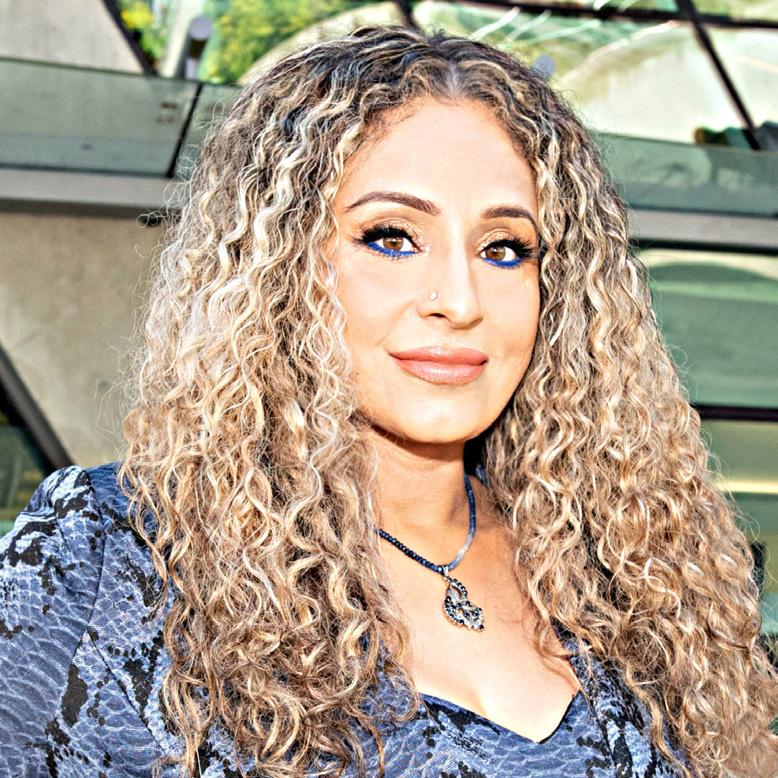

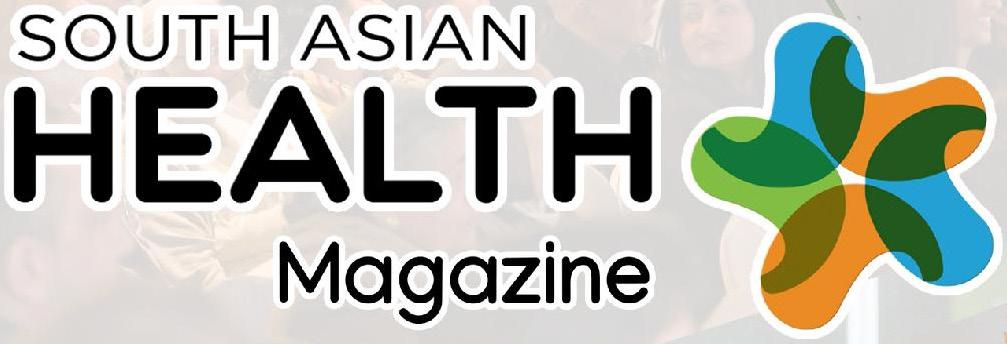








is a unique book that helps children address bullying and overcoming fear by believing in themselves.

Sometimes, the most fascinating part of a book is the story behind it. For me, this book is deeply personal—an account of my own healing journey behind the scenes. It’s not just a story for children, but a reflection of my experiences and the resilience I discovered along the way. This book has been a lifelong dream. Ever since I was a young girl, I promised myself that one day I would write it. What I didn’t anticipate, however, was that when the time finally came, I would face an unexpected challenge—a mild traumatic brain injury left me unable to read or write. What makes this book so special is its message—it’s more than a story. It teaches children about self-love, selfawareness, and cultivating the courage from within. By helping children understand their worth and strength, this book offers tools to combat bullying and build confidence. These lessons are not just for the playground but for life.
Through storytelling, I found a way forward. Even though I struggled to read and write, I leaned on the fact that our brains are natural storytelling machines. Storytelling is not only medicinal, but it is also profoundly healing for mental health. It gave me the strength to endure one of the most difficult times in my life.
Storytelling helped me process my emotions, reduce feelings of isolation, and create a sense of purpose and meaning in my journey. It allowed me to reframe my struggles, giving me a sense of control over my narrative and enabling me to see myself as resilient instead of broken. This act of sharing and reshaping my story became a key part of my healing process.
My memory became my greatest ally. Despite my limitations, I used it to piece together my ideas and, over time, I gained the skills to read and write again. I transitioned from editing in my mind to editing on paper, a process that felt transformative.
Storytelling is a beautiful way to reclaim and rearrange the narrative you’re in and change the outcome of your experience.
Storytelling also illustrated to me the power of creativity and healing.



Mamta is so excited for her first day of grade three! But when her classmates start to whisper and laugh in the line for recess, Mamta wonders if she’ll ever fit in. With some help from her Ma, Mamta learns to celebrate who she is in a confident and sparkling way. As Mamta encourages her classmates to shine bright and share their differences, she gains self-confidence and makes a new and unexpected friend. The book is available on: www.pujatheauthor.ca Amazon www.indigo.ca
Puja Suri is a Canadian Certified Counselor, Mind and Body Coach and Children’s Yoga Instructor. She has a passion for inclusion and has spent many years advocating for people with disabilities. In 2016, she was awarded the Certificate of Appreciation by Vantage for her valuable contributions within her community. Puja is the founder of Seva Girl, a fundraising-based initiative that supports organizations that educate and empower women and children. Her love for self-acceptance is incorporated in Mamta’s Lovely Mustache, which is based on her life, but with a fun twist.

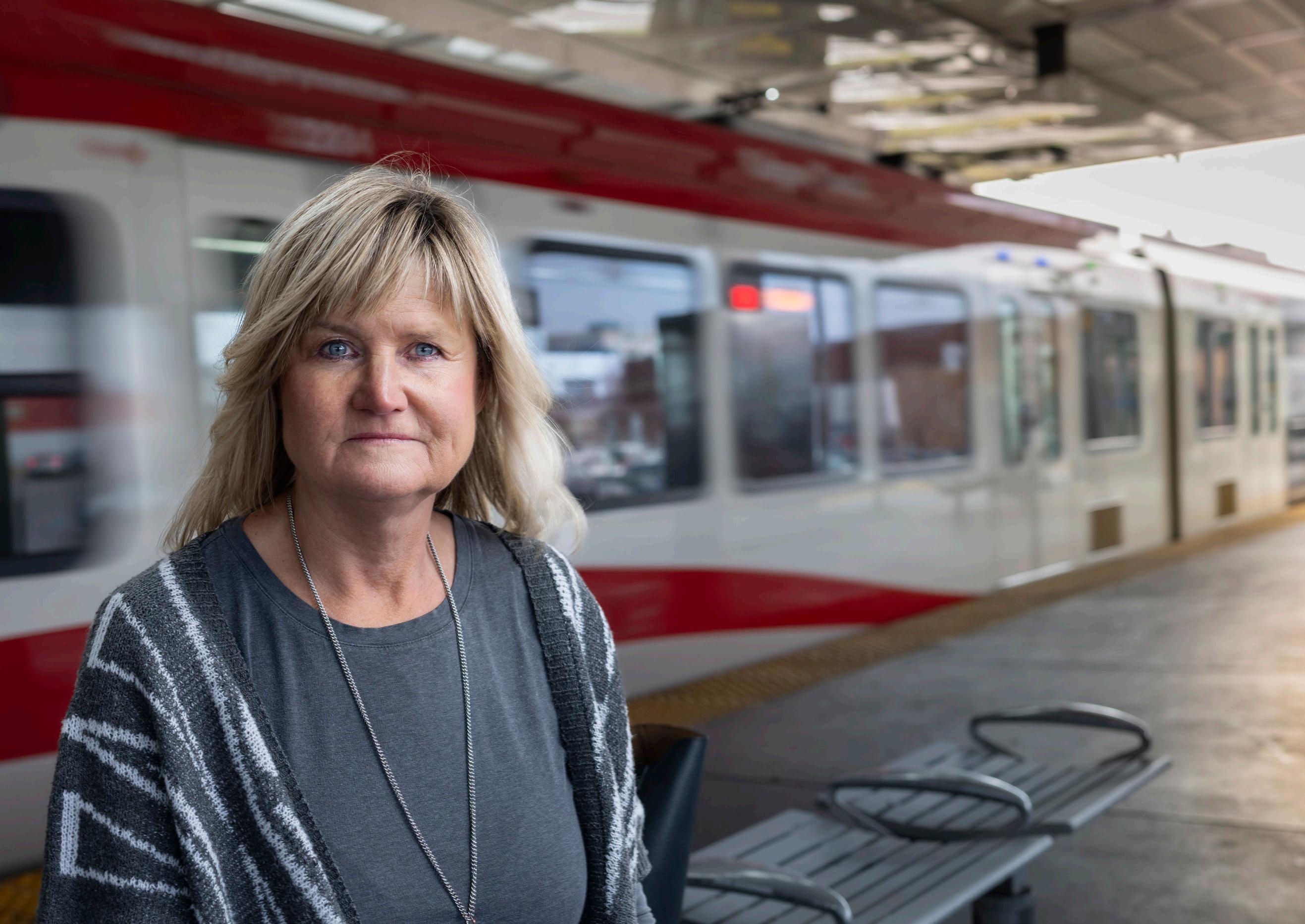


Alberta’s South Asian communities, particularly in Calgary and Edmonton, have long been integral to the province’s cultural tapestry and the topics of health and wellness are deeply valued within these communities. For the past five years, the Alberta South Asian Health Magazine has proudly served as a platform to highlight and celebrate the incredible success stories emerging from Alberta’s vibrant South Asian community. From pioneers in health and wellness to leaders in beauty, fitness, and mental well-being, we’ve had the honor of profiling individuals and organizations making a real difference. As we continue this journey, we remain committed to connecting our readers with expert insights, culturally relevant resources, and inspiring stories that promote healthier, more empowered lives. We look forward to expanding our network and working with even more passionate professionals who share our vision of community upliftment through knowledge and care.
In this issue, we are honored to feature Samantha Gill, founder ofGutvantageas our feature cover story. Samantha’s dedication to promoting gut health aligns with the growing emphasis on holistic wellness within our community and she serves clients across Canada with personalized guidance and support. Recognizing the profound impact of gut health on overall well-being, Samantha emphasizes its role in digestion, immunity, mental clarity, and emotional stability.
Beyond her one-on-one consultations, Samantha has expanded her reach by launching a podcast aimed at demystifying gut health topics and providing listeners with actionable advice to enhance their digestive wellness. This initiative reflects her commitment to making gut health accessible and understandable for a broader audience. Additionally, as an Arbonne Independent Consultant, Samantha integrates her passion for health and wellness with Arbonne’s holistic approach, offering clients products and guidance that align with her philosophy of nurturing the body from the inside out.
Additionally, we present an insightful article on achieving fitness goals in 2025 with Monika Arora, owner of Women Rock Center Calgary. Monika’s approach resonates with the cultural values of community support and personal empowerment, inspiring us all to prioritize our health and fitness this year.
These features underscore the vibrant efforts within Alberta’s South Asian communities to foster health, wellness, and beauty. By embracing both traditional practices and contemporary wellness trends, we continue to build a supportive environment that nurtures the well-being of all community members.We invite you to explore the rest of this issue, filled with valuable articles and expert insights designed to inform, inspire, and uplift. There’s something for everyone on the journey to better health and wellness within our vibrant South Asian community in Alberta.
Cheers to Good Health!


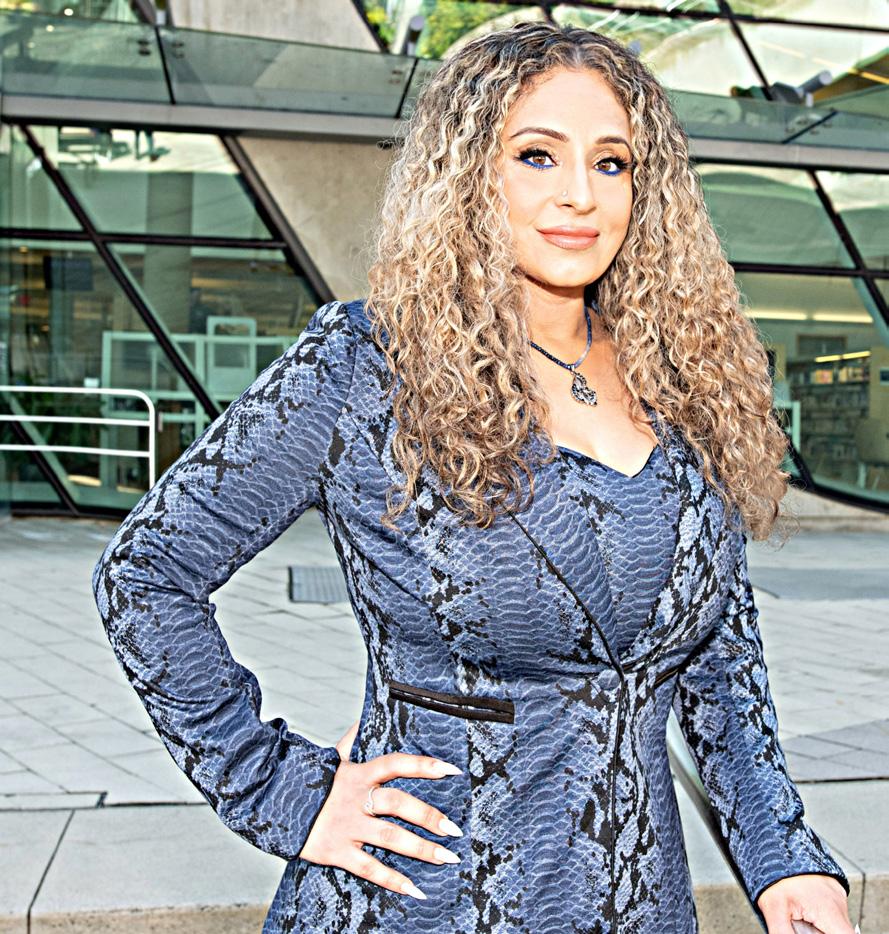
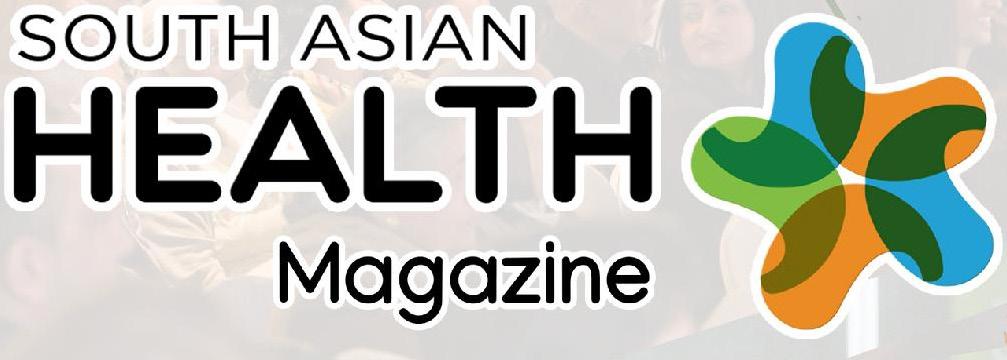
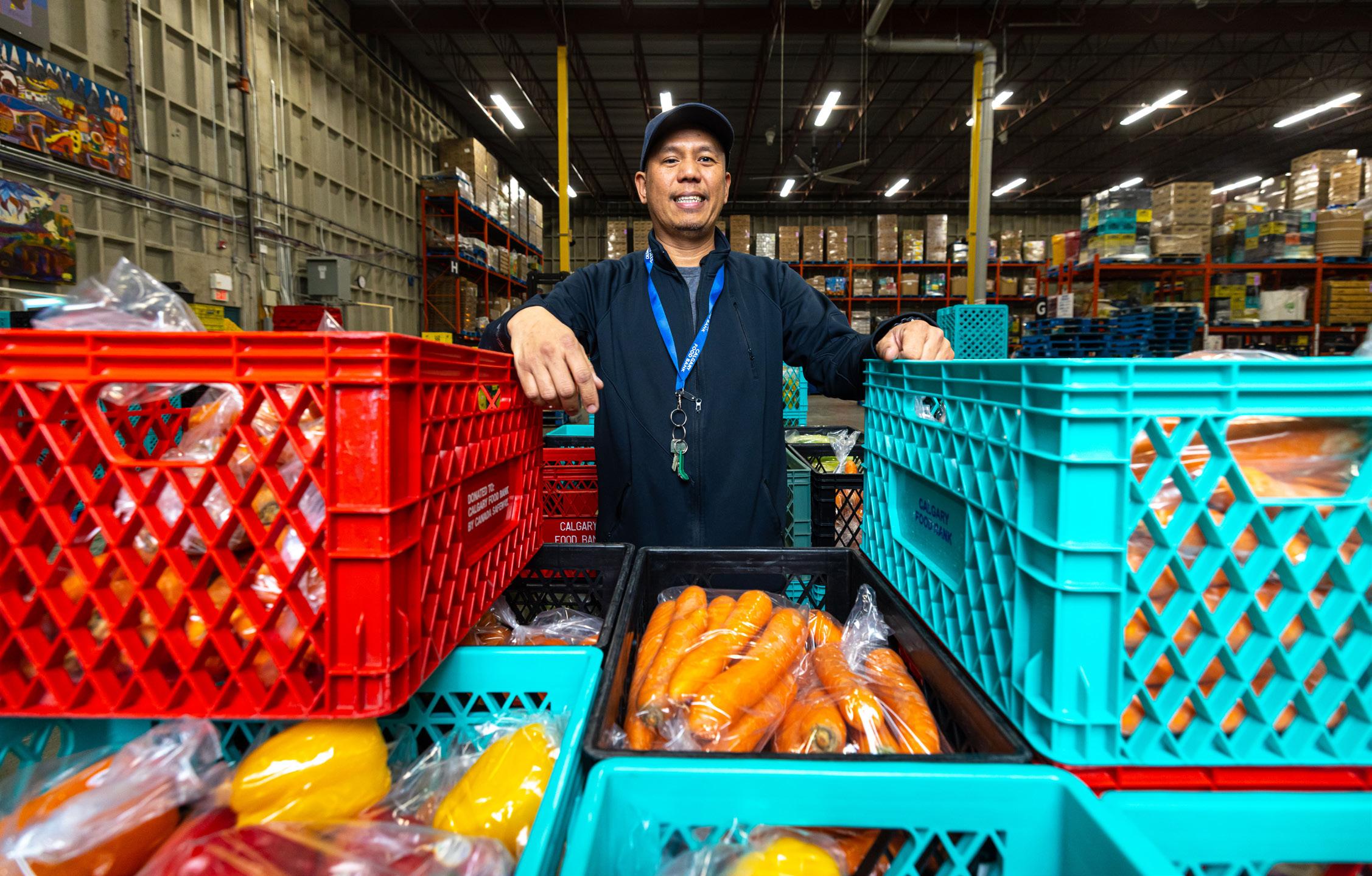

2024 was an exceptional year for the Calgary Food Bank. Although everyone in the country is feeling the effects of a tough financial situation, the Calgary community never fails to rise to the occasion and show up in incredible ways. This year the Calgary Food Bank increased their capacity to allow them to distribute Emergency Food Hampers to 750 households a day.
2024 was an exceptional year for the Calgary Food Bank. Although everyone in the country is feeling the effects of a tough financial situation, the Calgary community never fails to rise to the occasion and show up in incredible ways. This year the Calgary Food Bank increased their capacity to allow them to distribute Emergency Food Hampers to 750 households a day.
Last year they also introduced their new 5-year strategic plan, #FeedYYC. This plan acts as the guiding star for every
Last year they also introduced
decision made at the Calgary Food Bank, and highlights their commitment to being client centered, community focused and committed to excellence.
decision made at the Calgary Food Bank, and highlights their commitment to being client centered, community focused and committed to excellence.
As part of the focus on client centricity, they introduced a new model of Emergency Food Hamper distribution at their main location.
As part of the focus on client centricity, they introduced a new model of Emergency Food Hamper distribution at their main location.
Prior to this change, if you came to the Calgary Food Bank seeking food support, you would receive a standard hamper with predetermined items. This would have included
Prior to this change, if you came to the Calgary Food Bank seeking food support,
fresh fruits and vegetables, protein, whole grains along with some pantry staples and extras but may not have been totally suitable for someone’s individual preferences, dietary or cultural restrictions.
fresh fruits and vegetables, protein, whole grains along with some pantry staples and extras but may not have been totally suitable for someone’s individual preferences, dietary or cultural restrictions.
With the new choice model, households are awarded “points” to spend based on the number of people in the family and they can spend these points within different categories. This helps folks to get set up with the items that are most appropriate for their diet, lifestyle and culture.
With the new choice model, households are awarded “points” to spend based on the number of people in the family and they can spend these points within different categories. This helps folks to get set up
“The food choice model is really helping my family and me. It allows us to not only eat, but continue to try to eat healthily, while drowning in housing, medical, grocery, and transportation expenses. My family and I are forever grateful. Thank you to everyone involved!!! You are doing a fabulous job!”
– Calgary Food Bank client.
One thing that the Calgary Food Bank has come to find throughout all this is that generally people prefer items that they can use to prepare their own meals. Things like rice, flour and cooking oil go a long way in helping families to prepare hearty and healthy meals that they can make stretch.
The Calgary Food Bank is grateful to be able to offer their clients more choice and along with it, more dignity and control. The demand for their services is growing every day and shows no sign of slowing down any time soon. One of the most surprising stats to emerge is that 20% of people accessing the Calgary Food Bank are working full time and are just not able to make those dollars last.

95% like the food choices
76% say it suits their dietary restrictions better than the old model
73% say it suits their cultural requirements more than the old model
76% say they are able to use more food than the old model
82% say they are able to save more on groceries than the old model
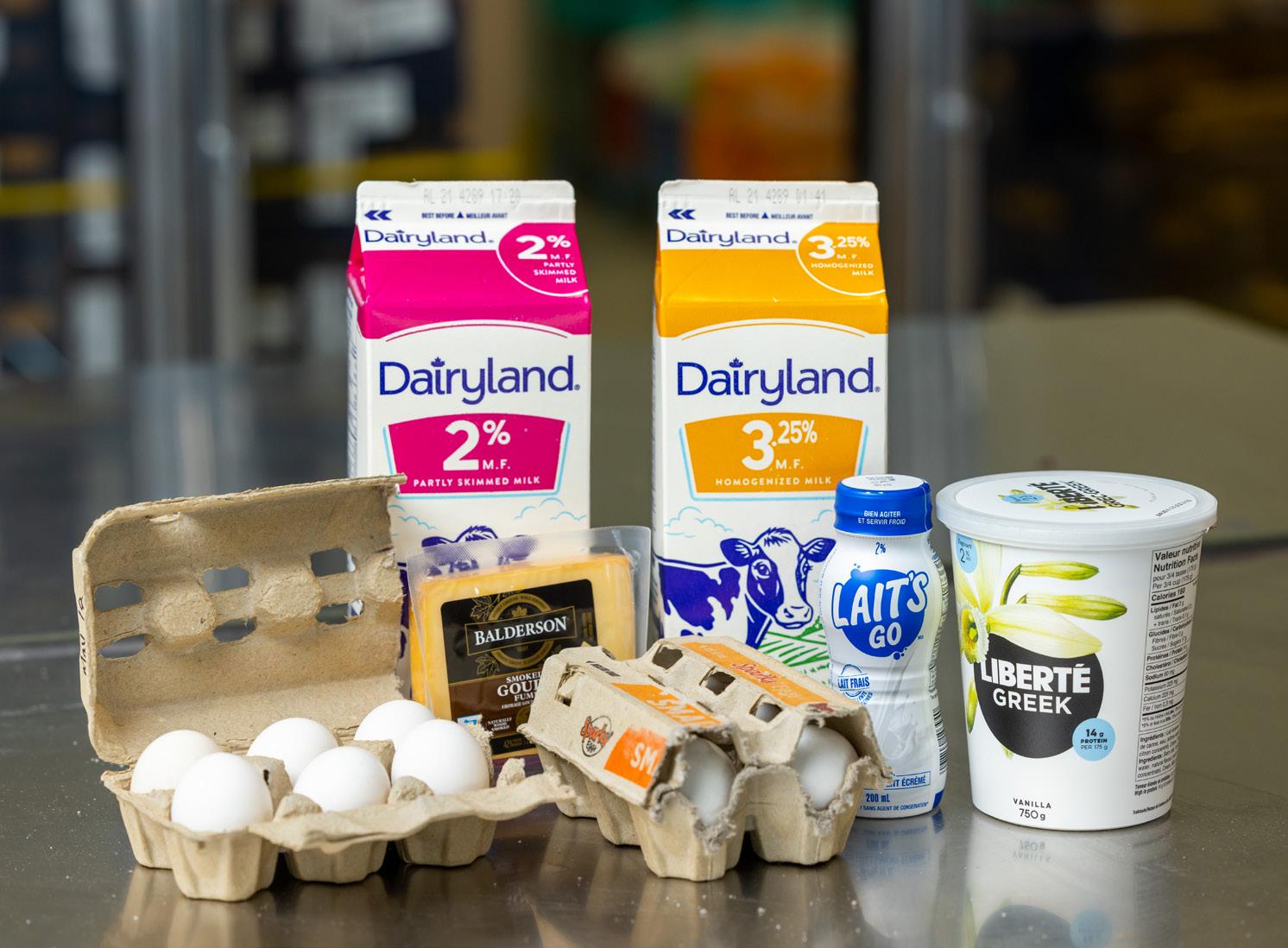
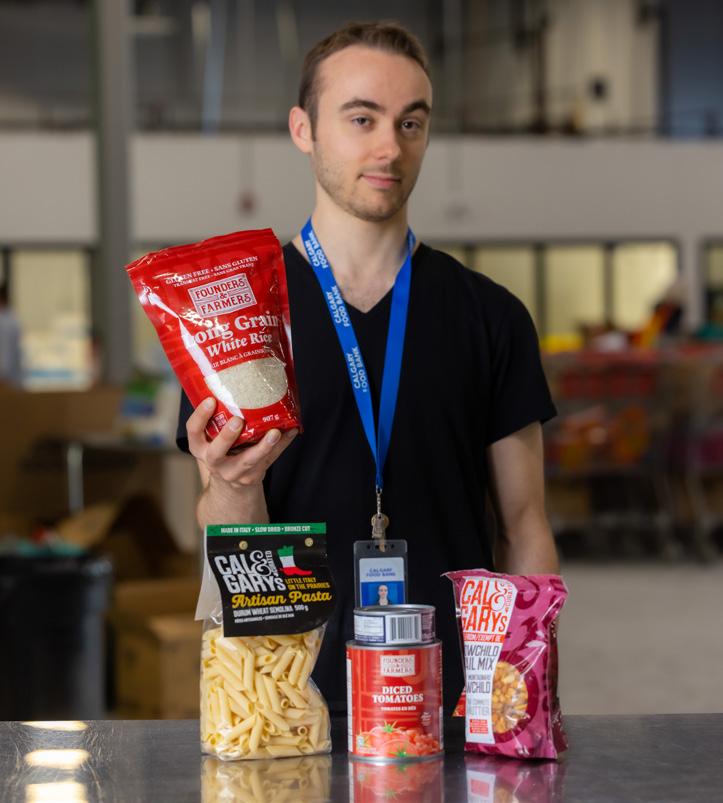









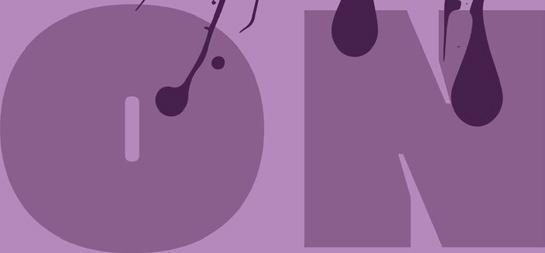




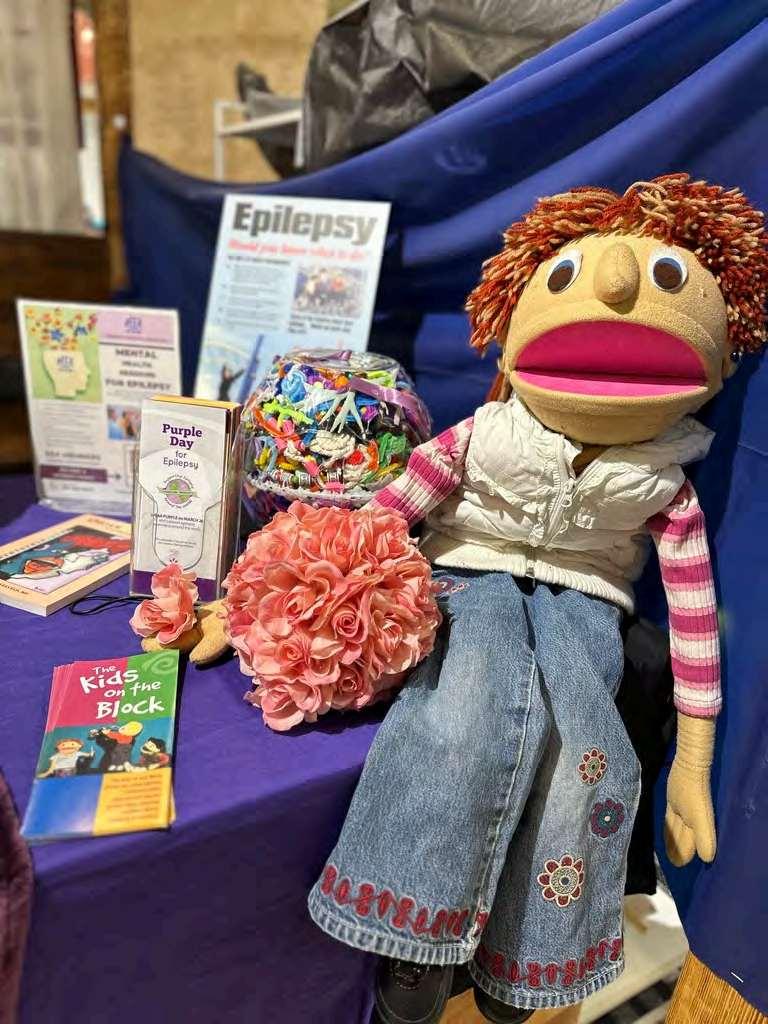

1
Can you tell us about your background and what inspired you to specialize in gut health nutrition specifically?
After high school, I became a Certified Pharmacy Technician, which sparked my passion for health. However, my personal struggle with digestive issues led me to explore holistic approaches. My digestive problems caused anxiety, brain fog, and low energy, which I later learned were linked to poor gut health from bad dietary choices, a sedentary lifestyle, and unmanaged stress.
The real turning point came when my dad was diagnosed with ALS at 59. This experience deeply affected my health and stress levels. Through my

studies in holistic nutrition, I learned to manage these symptoms better. This journey inspired me to found GutVantage, where I now help others improve their gut health for a better
2
What exactly is gut health, and why is it so important for overall well-being?
Gut health is all about keeping the bacteria and other microorganisms in our digestive system balanced and functioning well. These microorganisms make up what we call the gut microbiome. To keep things in check, we need more "good" gut bugs than "bad" ones and a lot of different kinds of these beneficial bugs.
When our gut is healthy, we digest food better, absorb more nutrients, and keep harmful bacteria in check.
Too many bad gut bugs can lead to inflammation, which can then trigger various health issues. A healthy gut is key to feeling good and staying healthy, benefiting our overall well-being.
But if our gut is out of balance, it can mess with our digestion, energy levels, mood, skin and even our immunity. Too many bad gut bugs can lead to inflammation, which can then trigger various health issues. A healthy gut is key to feeling good and staying healthy, benefiting our overall well-being.
The gut microbiome is made up of trillions of bacteria and other microorganisms that live in our digestive tract. These microorganisms help with digestion, nutrient absorption, and even play a role in our immune system. They also produce important compounds like vitamins and neurotransmitters that affect our mood and energy levels.
Nutrition plays a huge role in maintaining a healthy microbiome. Eating a diet rich in fibre from fruits, vegetables, nuts, seeds, legumes, grains, and fermented foods supports the growth of beneficial bacteria. On the other hand, a diet high in processed foods and sugar can harm our microbiome and lead to an imbalance.
In short, a healthy diet helps keep our gut microbiome balanced, which in turn supports our overall health and well-being.
Many people today face digestive issues like bloating, constipation, diarrhea, and acid reflux. These problems often stem from poor dietary choices, stress, and a sedentary lifestyle.
Addressing these issues through diet and lifestyle changes can make a big difference. Eating a wellbalanced diet of whole, natural, and unprocessed foods, along with thoroughly chewing your food in a relaxed and distraction-free environment, can benefit digestion. Additionally, avoiding trigger foods like fatty and spicy foods can help manage acid reflux.
Avoiding eating when stressed can also benefit digestion. Some simple techniques to help manage stress better include meditation and deep breathing.
Small changes in diet and lifestyle can often lead to significant improvements in digestive issues, helping people feel better and enhancing their overall quality of life. 3 4 5
How do you approach personalized nutrition recommendations for individuals with different gut health needs?
I take a personalized approach to each individual's unique gut health needs. This starts with a thorough assessment of their symptoms, health history, stress levels, sleep, exercise, and dietary habits. Understanding these factors helps me tailor recommendations that support their specific gut health goals. For example, if a client is struggling with bloating, I first work to determine the root cause, such as identifying foods that trigger the bloating. Based on this, I make diet and supplement recommendations customized to that client. By crafting personalized wellness plans, I aim to empower individuals to make sustainable changes that improve their gut health and overall well-being.
How do you stay updated with the latest research in gut health and nutrition? What are some recent developments or trends in gut health research that you find particularly exciting or promising?
Staying current with research is crucial, so I regularly review reputable journals, attend conferences, and participate in professional workshops. This helps me stay informed about emerging trends and advancements in gut health and nutrition.
One exciting trend is the growing understanding of the gut-brain connection and how gut health influences mental well-being. Research on how gut microbes impact conditions like depression and anxiety is particularly promising.
By staying updated, I can integrate the latest evidencebased practices into my work, offering clients the most effective strategies to improve their gut health and overall quality of life.

One exciting trend is the growing understanding of the gut-brain connection and how gut health influences mental well-being. Research on how gut microbes impact conditions like depression and anxiety is particularly promising

In your practice, how do you integrate gut health with overall holistic health and well-being?
In my practice, I view gut health as foundational to overall holistic well-being. I believe that a healthy gut is not just about digestion but influences everything from our immune system to our mood and energy levels.
I integrate gut health with holistic health by addressing the interconnectedness of the body and mind. This includes personalized wellness plans that positively support gut health, stress management techniques like mindfulness and exercise, and lifestyle habits that nurture both physical and mental health.
By taking a comprehensive approach, I aim to empower individuals to achieve optimal health and vitality through improved gut health, enhancing their overall quality of life.
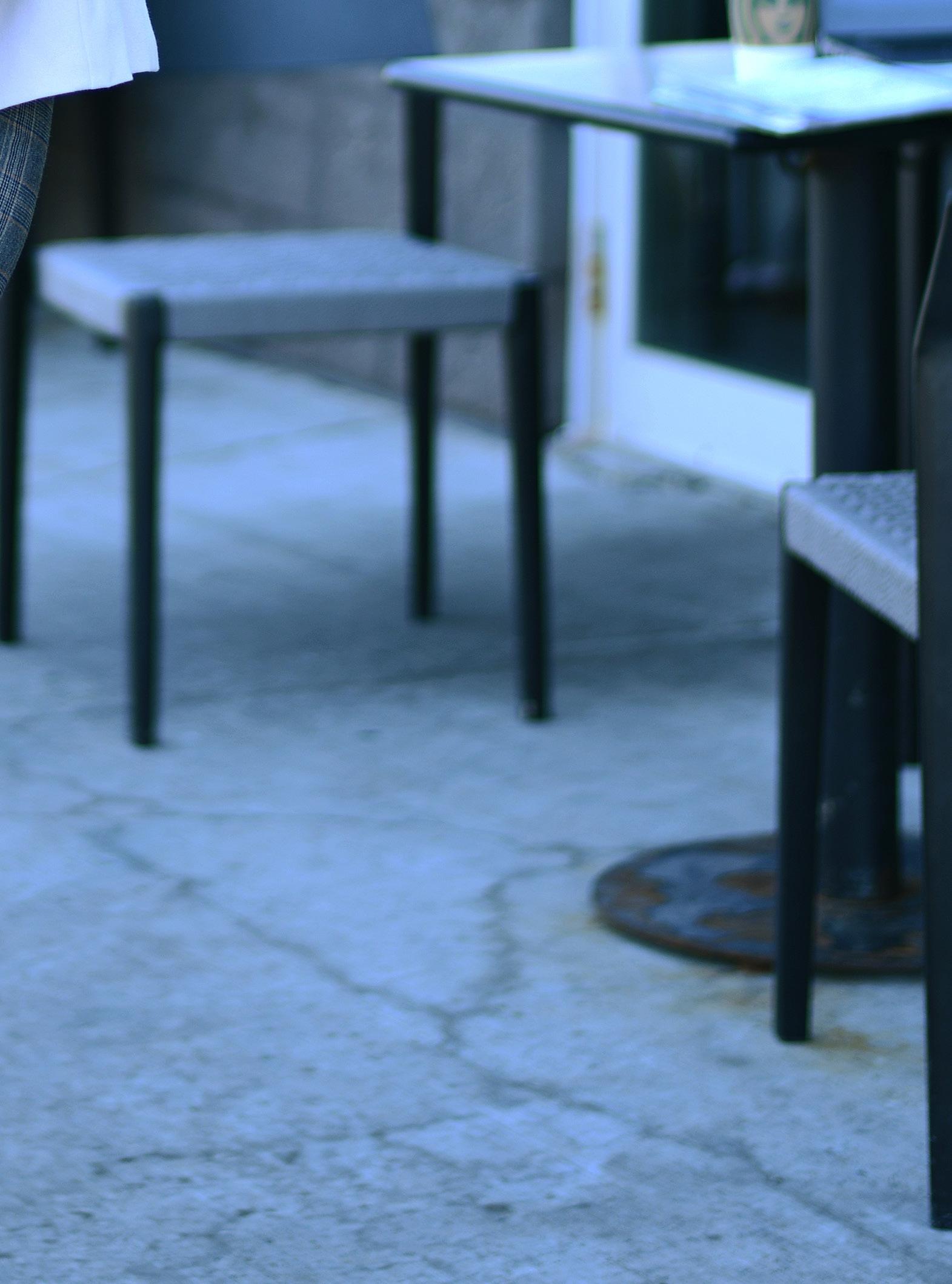
In my practice, I view gut health as foundational to overall holistic well-being. I believe that a healthy gut is not just about digestion but influences everything from our immune system to our mood and energy levels.
Poor sleep can negatively impact gut health and immune function.
Establishing good sleep hygiene practices promotes overall well-being, including gut health
In addition to diet, several factors are crucial for maintaining gut health:
Stress Management: Chronic stress can disrupt the balance of gut bacteria and affect digestion. Techniques like meditation, yoga, and deep breathing can help manage stress levels.
9
The amount of water you require depends on factors such as the climate of the area you live in, your level of activity and your diet. However, on average, I recommend about 2 litres per day.
Considering these factors alongside diet and properly preparing and storing food to prevent infections ensures a holistic approach to maintaining and improving gut health.
What is one piece of advice you would give to someone looking to support their gut health starting today?
When it comes to supporting your gut health, I would encourage working on increasing your plant consumption, which include nuts, seeds, legumes, grains, fruits and vegetables.
n cancer 8
Sleep Quality: Poor sleep can negatively impact gut health and immune function. Establishing good sleep hygiene practices promotes overall well-being, including gut health. I recommend at least 7 hours of sleep/daily.
Physical Activity: Regular low impact exercise, such as brisk walking for 20 minutes per day supports gut motility and promotes a healthy microbiome. It can also reduce inflammation and improve overall digestion.
Hydration: Drinking enough water supports digestion and helps maintain the mucosal lining of the intestines, which is essential for gut health.
Research suggests that by increasing your plant consumption to 30 different plants per week, you can increase the diversity of your gut bacteria, meaning that overtime, you will have more different types of gut bugs, which is what you want!
A high level of diversity in our gut bugs is what we want because studies have found lower gut bug diversity to be linked with:
n mental health disorders
n autoimmune conditions
n endocrine conditions
n gastrointestinal disorders
n cardiovascular disease
Can you share a success story from your practice where improving gut health had a significant impact on someone's life?
Certainly! I've seen firsthand the transformative power of focusing on gut health. One of my clients came to me struggling with low energy. Through the personalized nutrition and supplement recommendations in my One-onOne GutVantage Program, they experienced a significant turnaround within 4-5 weeks. They reported feeling great, with increased energy levels. This positive change even inspired them to return to the gym again.
This success story underscores the profound impact that improving gut health can have on overall well-being and quality of life.
My journey with nutrition and gut health has evolved significantly over the years. Initially trained in pharmaceutical sciences, I became a Certified Pharmacy Technician with a strong foundation in traditional medicine. However, personal health challenges, including digestive issues and stress-related symptoms, prompted me to explore holistic approaches.
As I delved into holistic nutrition and gut health, I began to understand the profound impact

of diet, lifestyle, and stress management on overall well-being. This led me to adopt a more integrative approach, combining evidence-based nutrition with personalized strategies to support gut health.
Over time, my approach has become more tailored, informed by ongoing research and client experiences. I emphasize the importance of whole foods, gut-friendly nutrients, and lifestyle habits that promote a balanced microbiome and optimal health.
This your go-to source for all things gut health, self-care, and trusting your intuition. Hosted by Samantha Gill, a Certified Holistic Nutritional Consultant and the founder of GutVantage, this podcast offers expert tips, personal stories, and practical advice to help you connect with your gut and improve your overall well-being. Whether you're a busy parent or simply looking to feel better every day, Samantha provides relatable insights to help you tune into your body's wisdom and take charge of your health with heart. Available on Spotify—make sure to follow so you don't miss out! New episodes are released at the beginning of every month.





BOTANCALLY BASED HEALTH & WELLNESS PRODUCTS
What we put in our body matters, but so does what we put on our body! That’s why I’ve joined Arbonne to offer clean, highquality, plant-based products that are cruelty-free, vegan, and gluten-free—meeting European standards and free from over 2,000 harmful ingredients. I’ve done the research for you! Their products are also thoroughly tested for heavy metals, pesticides, herbicides, and other harmful chemicals. Arbonne is a Certified B Corp, putting people and the planet first.
With over 40 years of expertise, Arbonne’s products are third-party tested and available only through independent consultants like me.
To explore the products, visit: samanthagill.arbonne.com
NOTE: If you sign up as a Preferred Client for just $20/year, you’ll enjoy discounts for the year, free shipping, and gifts on qualifying orders. For any questions or guidance on products, feel free to Message me on Instagram @GutVantage or on WhatsApp at 403-973-6760 to schedule a quick call with me.
I’m here to support your health and wellness journey!





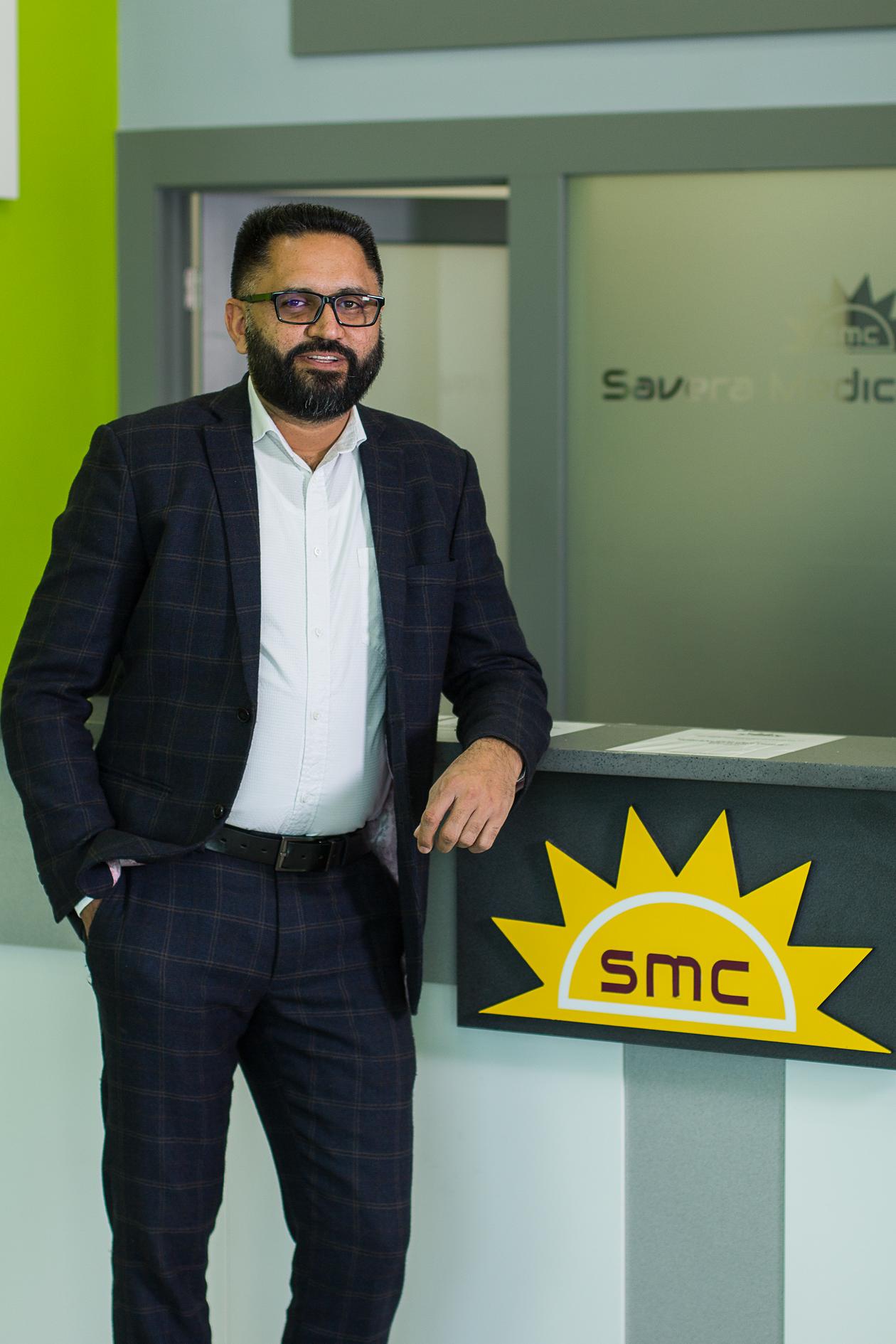






Did you know that in Canada, 6.1% of adults over the age of 20 have prediabetes? Having prediabetes increases the risk of progressing to Type 2 diabetes (T2D). however, there are lifestyle changes that can reduce this risk.
Prediabetes occurs when blood sugar levels are higher than normal but are not yet high enough to be classified as T2D. T2D is a chronic condition where the body is unable to use insulin properly, leading to high blood sugar that may result in other complications like heart disease or nerve damage.
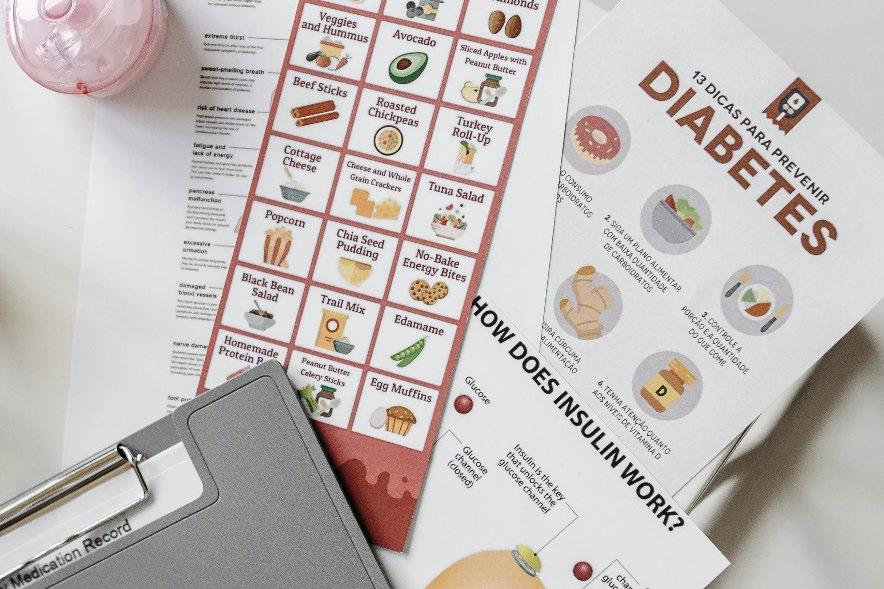
Our body uses blood sugar (glucose) for energy. After eating, our body breaks some of the food we eat down into glucose. The hormone insulin then helps move the glucose into our cells to be used for energy. In prediabetes, insulin does not work as well as it used to. This leads to higher blood sugar levels resulting in prediabetes. Often, there are no physical symptoms of prediabetes.
Prediabetes can develop into T2D. However, progression is not inevitable and making changes sooner can reduce the chances of developing T2D
For people with prediabetes, it is important to know that blood sugar levels are affected by what and when you eat. Tips for eating to manage blood sugars include:
1. Limit juices and drinks with added sugar: Choose whole fruit or flavour water with lemon or lime.
2. Eat 3 meals a day, with about 4 to 6 hours between meals. This can manage blood sugar and feelings of hunger.
3. Build your plate according to Diabetes Canada: Cover half your plate with vegetables, such as broccoli, spinach, and cabbage. Cover another quarter of your plate with whole grain products or starchy vegetables such as potatoes, corn, and yams. Put protein foods on the remaining ¼ plate such as lentils, tofu, meat, fish, and eggs. Visit diabetes.ca/nutrition to find the healthy eating section with additional tips.

4. Choose foods with fibre: Fibre slows down digestion and helps maintain stable blood sugar levels. Include whole grains like oats, quinoa, and barley along with vegetables and fruits to boost your fibre intake. Aim for 30 grams or more per day. Visit ahs.ca/nutritionhandouts and search Fibre for more information about foods with fibre.
5. Choose unsaturated fats: Prediabetes increases the risk of developing heart disease. Replacing saturated fat in the diet with unsaturated fat can help decrease this risk. Unsaturated fat can also help improve insulin sensitivity.
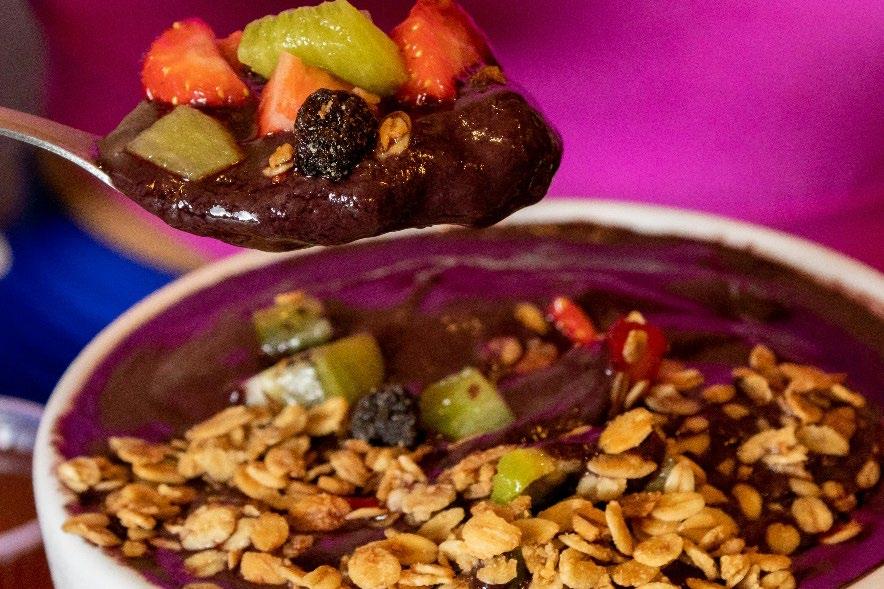
• Foods high in unsaturated Fats:
• Soft margarine
• Oils: canola, olive, peanut, sunflower
• Avocado, nuts and seeds, nut butters
• Ground flax seeds, chia seeds, or hemp seeds
• Fish instead of other animal proteins
• Foods high in Saturated Fats:
• Coconut oil, lard, butter, hard margarine
• Red meat, deep fried foods, processed cheeses
• Cream and ice cream
Physical activity is a powerful tool in managing prediabetes. Physical activity helps your body use insulin to lower blood sugar levels. Start slowly and build up to 30 minutes each day, 5 to 7 days a week. Brisk walking, swimming, cycling, or any other activity you enjoy is a great place to start. Resistance training such as lifting weights or bodyweight exercises can also be beneficial for building muscle and improving blood sugars.
Remember that physical activity is cumulative and does not need to be completed in one session. Even a brief 10-minute walk after a meal has been shown to improve blood sugar levels. For more information visit csepguidelines.ca.
Excess body weight is a factor that may contribute to having prediabetes and the development of

T2D. A reduction as little as 5% of initial weight can greatly reduce the risk of developing T2D for example for a person who weighs 90 kg (200 lb), 5% weight loss would be 4.5 kg (10 lb). Rather than focusing on rapid weight loss, aim for gradual, sustainable changes. Visit ahs.ca/nutritionhandouts and search Eating Well for Weight and Health to learn more about weight management.
Making changes can help reduce risk while still maintaining an enjoyable lifestyle. However, change can be hard, especially if we try to make too many changes too fast. Set achievable goals and take small, gradual steps to ensure that your approach is sustainable.
Consider ways to support your health that work for you and seek guidance from healthcare providers for personalized advice.
Alberta Health Services encourages all Albertans to live a healthy life. These weekly Wellness Articles are created by a team of healthcare professionals from AHS in collaboration with provincial healthcare experts in Alberta and content from myhealth.alberta.ca. Our experts ensure this information is factual, current, and written for Albertans.
From stress-relief strategies to finding balance within your life, these Wellness Articles cover a variety of different topics designed to inspire and educate Albertans on creating a positive and healthy lifestyle.
We welcome and encourage weekly newspapers, community newsletters and other publications to reproduce this information free of charge. Please credit Alberta Health Services or the identified content provider.
If you would like to be added to the distribution list for these articles, please email: rebecca.johnson2@ahs.ca. You will receive a monthly email containing articles for the upcoming four weeks.



We are excited to announce Gurinder Chahal, Branch Manager from Punjab Insurance, as the next feature cover story for the Alberta South Asian Health Magazine – Special Vaisakhi 2022

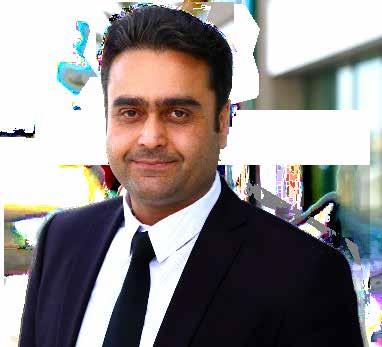
Gurinder Chahal and his team are all about their clients. They strive to deliver the best insurance service keeping in mind that each client and situation is different. If you are looking for an Insurance agent who puts the needs of the client first, then you have come to the right place! Gurinder and his team listen to you and then offer solutions to meet your needs. They pride themselves in providing superior advise and customer service. They respond to all forms of communication in a timely manner.






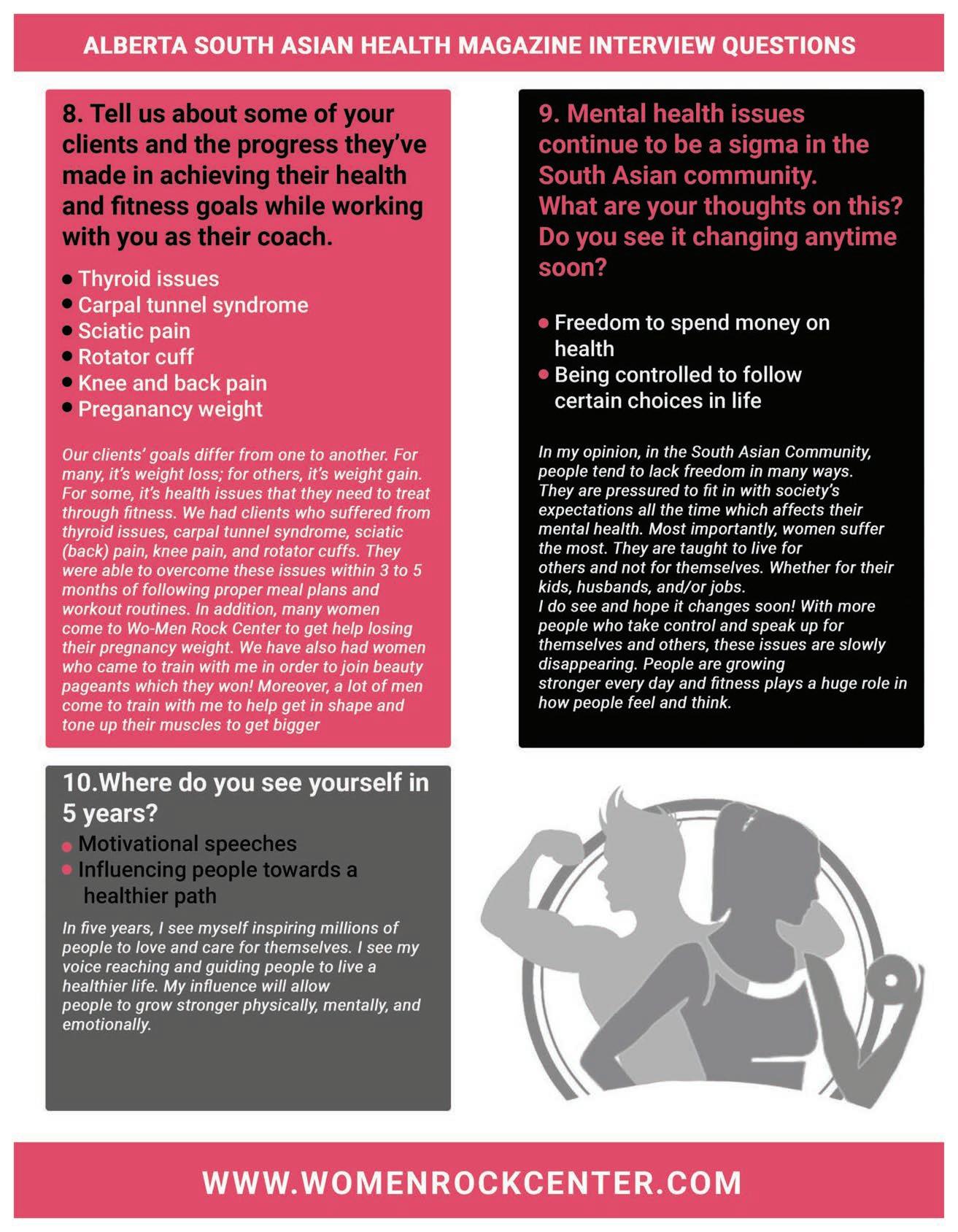

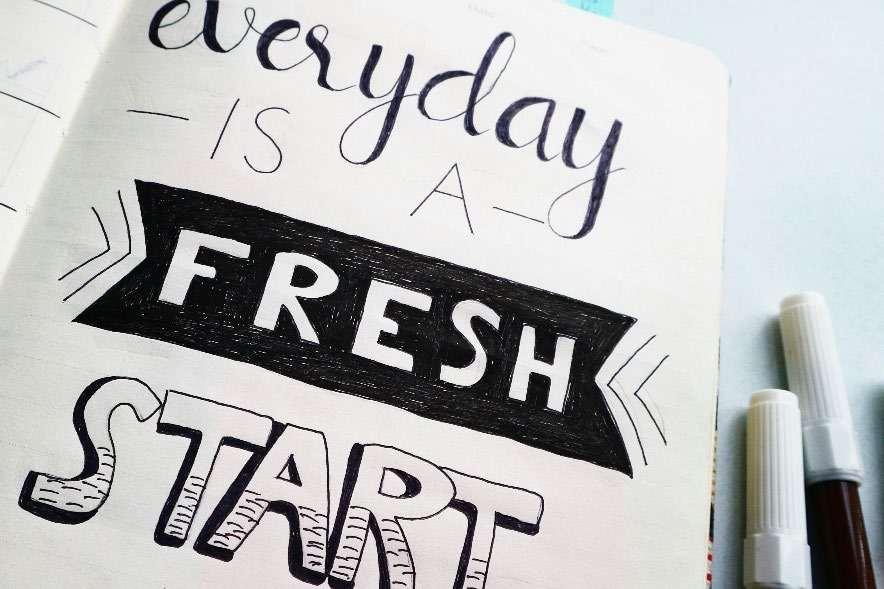




Hardeep Kaur Singh is not just a practitioner—she is a guide, a healer, and a deeply intuitive force in the lives of those she serves. With a profound understanding of the interconnectedness of mind, body, and soul, Hardeep offers a holistic approach to healing that is transformative on every level. Specializing in mental health, addiction recovery, and physical health challenges, she brings a unique blend of psychodynamic therapy, somatic healing, and intuitive energy work into her practice.
Offering both in-person sessions in Winnipeg, Manitoba, and online sessions, Hardeep works with clients across Canada. Whether you’re local or remote, she ensures that the opportunity for deep healing is within reach, with a strong connection that transcends geographic boundaries.
Her work is built on the foundation of spirituality, where she holds space with deep compassion and non-judgment, allowing her clients to feel safe in uncovering deep-seated traumas and emotional wounds stored in both the mind and body. With expertise in helping individuals release energetic blockages and resolve ancestral patterns, Hardeep helps people heal from the inside out, addressing root causes that often elude conventional treatment.
Her approach is deeply personal, meeting each individual where they are, recognizing that no two healing journeys are the same. Whether it’s through somatic practices, energy healing, or spiritual guidance, Hardeep’s clients are empowered to reconnect with themselves, heal, and step into their fullest potential. Through her work, she cultivates wholeness, healing, and a profound sense of well-being, offering a path to inner peace and transformation that is both grounded and spiritual.
Can you tell us about who you are as a practitioner and what drives your approach
As a practitioner, my work is deeply informed by my own healing journey and a strong foundation in spirituality. What drives me is the belief that true healing is a holistic process—one that integrates the mind, body, and soul. My passion lies in helping people uncover the emotional, mental, and spiritual layers of their struggles, guiding them toward deep transformation and self-empowerment.
I specialize in working with clients facing mental health challenges, addiction, and the physical manifestations of unresolved trauma. Many people don’t realize that chronic pain, tension, or other unexplained health issues often stem from suppressed emotions and past wounds. Healing becomes most effective when we address not just the mind, but also the body and soul. Through a combination of psychodynamic therapy, somatic practices, and energy healing, I help clients process and release stored pain—whether it resides in the subconscious mind or is held within the body. Somatic practices play a key role in this work, allowing clients to reconnect with their bodies, regulate their nervous systems, and process emotions that talk therapy alone may not reach.
My passion lies in helping people uncover the emotional, mental, and spiritual layers of their struggles, guiding them toward deep transformation and self-empowerment
As an intuitive energy psychologist and healer, I also help clients identify and clear energetic blockages that may be preventing them from moving forward. These blockages can manifest as trauma, emotional wounds, or even inherited patterns that continue to repeat. By integrating energy healing with therapeutic and somatic techniques, we create space for deep, multidimensional healing on mental, emotional, physical, and spiritual levels.
At the heart of my work is a deep commitment to meeting clients where they are. Whether they seek emotional healing, support for physical issues, or a deeper connection to themselves, my goal is to provide a compassionate and individualized approach. Everyone deserves to heal and feel whole, and transformation is possible—no matter where they are in their journey.
did your personal journey influence the business?
My journey to establishing Mind, Body & Soul Holistic Healing was deeply rooted in my own spiritual awakening. This profound experience not only transformed my perspective on life but also ignited a passion to help others on their paths to healing and self-discovery. I realized that true wellness extends beyond just the physical body; it encompasses the mind, body, and soul.
Growing up in the South Asian community, I witnessed firsthand the stigma surrounding mental health, trauma, and addiction. These struggles are often dismissed, minimized, or seen as weaknesses, forcing many individuals to suffer in silence rather than seek help. In many South Asian families, emotional expression is discouraged, generational wounds go unaddressed, and healing is often overlooked in favor of maintaining appearances. I saw how deeply this affected not just individuals but entire families, leading to cycles of unprocessed pain, suppressed emotions, and internalized shame.
My personal journey inspired me to bridge the gap by bringing holistic health and therapy into the community, creating a space where people can feel seen, heard, and supported without fear of judgment. My goal was to provide a culturally sensitive and trauma-informed approach, one that acknowledges the unique cultural expectations, family dynamics, and unspoken struggles that many South Asians face. By integrating holistic healing, I aim to help individuals not only break free from personal suffering but also reconnect with their ancestral wisdom and inner strength, fostering a sense of deep healing, selfempowerment, and transformation.
The name “Mind Body & Soul Holistic Healing” emerged from my own transformative healing journey. As I navigated my spiritual awakening, I discovered that true healing is a deeply integrative process that touches every aspect of our being. It’s not just about addressing physical symptoms or emotional pain in isolation but nurturing the mind, body, and soul in harmony.
Each element of the name reflects a crucial part of the healing process. The mind represents our thoughts, beliefs, and mental well-being, which often require gentle exploration and reframing. The body is where we store emotions and traumas, necessitating somatic work and physical release. The soul is the essence of who we are, calling for spiritual alignment and connection.
Through my own experiences, I realized how important it is to approach healing from a holistic perspective, especially in communities where mental health is often stigmatized. The name embodies my mission to offer a safe, nurturing space where clients can embark on their own journeys of healing and self-discovery, fully supported on all levels.
Holistic wellness found me during some of the most challenging moments in my life. As I navigated through my own healing journey, I was drawn to ancient roots and spiritual practices that felt both familiar and transformative. These practices, rooted in time-honored wisdom, offered more than just comfort—they facilitated profound shifts within me. I began to see changes not just within myself but in every aspect of my life, from my relationships to my sense of purpose and well-being.
The challenges I faced became pivotal turning points, guiding me to explore holistic wellness as a way to heal deeply and authentically. I connected with therapies that honored the interconnectedness of our being, where the physical, emotional, and spiritual are seen as one. This integrative approach allowed me to release old patterns, heal past wounds, and step into a more aligned and empowered version of myself.
In my daily life, I continue to embody holistic wellness by weaving in these ancient teachings and practices. Whether through meditation, mindful movement, energy work, or simply holding space for reflection, I stay connected to the rhythms of my inner world. This ongoing practice helps me maintain balance, remain present, and stay attuned to my highest self. It’s a journey of continuous growth, where wellness is not a destination but a way of living—an ongoing dialogue between the mind, body, and soul.
The core philosophy behind Mind Body Soul Holistic Healing is that true healing occurs when we address the entirety of a person. This holistic approach is rooted in the belief that every aspect of our being is interconnected, and genuine wellness can only be achieved when we nurture all these facets together. 3 4 5
In my practice, I emphasize the importance of understanding the deeper layers of one’s experiences and emotions. I believe that physical symptoms often have emotional or energetic roots, and by addressing these, we can facilitate profound healing. My philosophy is guided by compassion, presence, and the integration of ancient wisdom with modern therapeutic techniques.
This means that each client’s journey is unique, requiring personalized attention that honors their individual needs and life stories. I draw on a blend of therapeutic modalities—from energy work and sound therapy to mindfulness and somatic practices—ensuring a comprehensive approach that resonates on a deeper level.
Ultimately, my goal is to empower clients to reconnect with their inner wisdom, release what no longer serves them, and cultivate a balanced and fulfilling life. This philosophy shapes every aspect of my practice, guiding how I engage with clients, develop programs, and create a healing space that is both nurturing and transformative.
How do you blend ancient wisdom with western or modern therapeutic practices to create a distinctive healing experience at Mind,
At Mind Body Soul Holistic Healing, I merge ancient wisdom with modern therapeutic practices to offer a healing experience that addresses the whole person. The ancient teachings of transcendental meditation and breathwork form the foundation of my approach, offering clients time-tested methods to

In addition to these practices, I provide clients with modules and resources to continue their exploration and reflection outside of therapy. This ensures that the healing process extends beyond our sessions, allowing for deeper self-discovery and sustained personal growth. These modules help clients integrate what they learn into their daily lives, fostering a continuous
By combining these ancient techniques with structured guidance for ongoing reflection, I create a holistic framework that empowers clients to engage with their healing process actively. This blend of timeless practices and modern support tools allows clients to cultivate inner peace and resilience, making the healing experience both profound and enduring.
My goal is to empower clients to reconnect with their inner wisdom, release what no longer serves them, and cultivate a balanced and fulfilling life
How does your therapeutic approach facilitate lasting emotional healing and transformation for your clients?
My approach is designed to facilitate lasting emotional healing and transformation by delving into the root causes of emotional and psychological challenges. This involves guiding clients through profound inner work, including shadow work and inner child healing, which helps them confront and integrate the parts of themselves that have been suppressed or wounded.
Through shadow work, clients gain the courage to face the aspects of their psyche that they may have ignored, leading to breakthroughs in selfawareness and emotional resilience. Inner child healing allows clients to address and nurture past traumas, creating a sense of wholeness and self-compassion.
In addition to these, energy work and sound therapy provide a supportive foundation for emotional release and rebalancing. Energy work helps clear stagnant energy and restore harmony, while sound therapy uses frequencies to soothe the mind and body, fostering a state of deep relaxation and healing.
Together, these methods offer a holistic and comprehensive path to healing. Clients often report feeling more empowered, emotionally balanced, and connected to their true selves. This integrative approach not only helps to resolve current issues but also equips clients with the tools to maintain their well-being long after therapy has concluded.
In what ways do you tailor your services to cater the cultural and individual needs of your diverse clientele, particularly within the South Asian Community?
In my practice, I prioritize a culturally sensitive and holistic approach to ensure that my clients, particularly within the South Asian community,
feel understood and supported. I recognize that the South Asian culture often places a significant emphasis on family dynamics, community reputation, and the importance of balancing tradition with modern-day mental health needs. With this in mind, I work to create a safe and non-judgmental space where clients can freely express their concerns, knowing that their cultural values and backgrounds will be respected.
I integrate practices that resonate with the South Asian community, such as mindfulness, meditation, and even specific spiritual practices when appropriate, all while maintaining the integrity of evidence-based therapies. I am also mindful of the stigma that often surrounds mental health in some South Asian families, which is why I approach every session with empathy, confidentiality, and patience, allowing individuals to navigate their own healing journey at their own pace.
Furthermore, I offer flexibility in addressing both emotional and spiritual aspects of healing, recognizing the role that faith, rituals, and community support can play in a person’s well-being. Whether it’s through integrating Ayurvedic principles, spiritual practices such as mantra recitation or energy healing, or tailoring the healing process to accommodate unique cultural perspectives, I strive to help clients reconcile their traditional beliefs with their emotional and mental health needs.
Ultimately, my goal is to foster a space where South Asian clients can feel empowered, without the fear of judgment or misunderstanding, and where their cultural and individual needs are embraced and honored as part of their healing journey.
What
challenges have you faced in building your holistic business, and how have you overcome them?
Building a holistic business has come with its unique set of challenges, but each has been an opportunity for growth and learning. One of the biggest hurdles has been helping people understand the value of integrating mind, body, and soul in healing. Many individuals are accustomed to traditional, symptom-focused approaches and may not immediately grasp the benefits of a more holistic approach.
To overcome this, I focus on educating my clients about the interconnectedness of mental, emotional, physical, and spiritual health, showing them how each aspect impacts the other. I also make sure to share real-life success stories and results from my practice to help them see the transformative potential of a holistic approach.
Another challenge has been navigating the stigma surrounding mental health, particularly within certain cultural communities. In the South Asian community, for example, there is often a hesitancy to seek help due to fear of judgment or a lack of understanding around mental health. To address this, I have made it a priority to create a culturally sensitive environment where people feel heard, seen, and respected. I’ve worked to incorporate spiritual and cultural elements into my practice, offering mindfulness, meditation, and Ayurvedic-based practices, which can often make clients more comfortable in opening up about their struggles.
Through these challenges,
I’ve been able to refine
my
practice and stay committed to offering a healing space where people can address the root causes of their pain, rather than just the symptoms. The key has been staying true to my mission, remaining adaptable, and ensuring that I continue to learn and evolve as a practitioner
A further challenge has been balancing the diverse needs of my clients while maintaining my own selfcare and boundaries. In a holistic practice, it’s easy to get caught up in the emotional energy of others, especially when supporting people through difficult healing journeys. I’ve learned the importance of setting clear boundaries and practicing self-care to ensure I can show up fully for my clients without burning out. Additionally, continuing to educate myself, whether through workshops, courses, or networking with other holistic practitioners, has helped me stay grounded and grow both personally and professionally.
Through these challenges, I’ve been able to refine my practice and stay committed to offering a healing space where people can address the root causes of their pain, rather than just the symptoms. The key has been staying true to my mission, remaining adaptable, and ensuring that I continue to learn and evolve as a practitioner.
One of the most memorable success stories that stands out to me is of a client who came in with chronic physical health issues that no doctor could diagnose. They had seen numerous specialists, undergone countless tests, and yet no one could pinpoint the cause of their pain. Alongside their physical struggles, they were also battling a deep addiction that had been affecting their relationships, work life, and overall well-being.
Through our sessions, we explored the emotional and mental layers that were contributing to both their addiction and physical symptoms. We uncovered how unresolved trauma from their past was manifesting not just emotionally but physically in their body. Together, we focused on integrating mental health tools, somatic therapies, and spiritual practices to help them reconnect with their body and heal at a deeper level.
Over time, they noticed a significant reduction in their physical symptoms, which was something they hadn’t experienced before.
Their addiction, which had felt like an insurmountable barrier, also started to loosen its grip, as they were able to process and release the underlying emotional pain that had kept them stuck. They began to regain a sense of control over their life, and the physical healing they experienced reflected the inner work they were doing.
This transformation was deeply rewarding, not just for the client but for me as a practitioner, as it reinforced the power of a holistic approach. It was a reminder that when we address the root causes— whether they’re emotional, mental, or spiritual—we can unlock true healing on all levels, beyond just the physical symptoms.
How do you view the role of holistic wellness in today’s fast-paced world, and why do you think it’s gaining popularity?
In today’s fast-paced, always-on world, holistic wellness plays a crucial role in helping individuals reconnect with themselves and prioritize their overall well-being. As we navigate the pressures of modern life, with its constant demands on our time, energy, and attention, many people are beginning to realize that physical health alone isn’t enough to maintain balance. True wellness encompasses not just the body, but the mind, emotions, and spirit. It’s about aligning all aspects of our being to find harmony and healing.
Holistic wellness is gaining popularity because people are increasingly seeking a more integrated approach to health that goes beyond quick fixes and symptom management. Many are realizing that mental health, emotional well-being, and spiritual alignment are just as essential as physical health. The traditional healthcare system, while crucial, often doesn’t address the root causes of issues—whether they’re emotional, mental, or spiritual. This gap is where holistic wellness comes in, offering a more comprehensive solution that fosters long-term healing and personal growth. 11
Truewellnessencompasses not just the body,but the mind, emotions,andspirit.It’sabout aligningallaspectsofourbeingto findharmonyandhealing.

What I hope people take away from working with me or learning about holistic wellness is a deeper sense of self-awareness, empowerment, and compassion for themselves. When it comes to mental health and addictions, I want people to know that they don’t have to suffer in silence. You are never alone in this journey
Another reason for the growing interest is the rise in stress-related illnesses, chronic conditions, and burnout. As people seek ways to cope with these challenges, holistic practices such as mindfulness, meditation, energy healing, and somatic therapies provide effective tools for not just managing but healing on a deeper level. There’s also an increasing recognition of the mind-body connection, where emotional and mental states can directly impact physical health, leading individuals to look for ways to heal at all levels.
People are also becoming more aware of the importance of self-care and the need to reclaim their sense of balance. With the constant noise and distractions of modern life, many are turning to holistic wellness as a way to slow down, listen to their bodies, and reconnect with their inner selves. Whether through yoga, meditation, energy work, or nutrition, these practices help individuals regain a sense of control and purpose in a world that often feels overwhelming.
In my work, I see the power of holistic wellness not only in restoring health but in creating lasting transformation. By helping clients integrate all aspects of their being—physical, emotional, and spiritual— they are able to achieve a sense of balance and alignment that supports them in all areas of their lives. This shift towards holistic healing reflects a broader cultural movement toward self-awareness, mindfulness, and personal empowerment, and it’s exciting to be part of this journey with my clients.
What do
What I hope people take away from working with me or learning about holistic wellness is a deeper sense of self-awareness, empowerment, and compassion for themselves. When it comes to mental health and addictions, I want people to know that they don’t have to suffer in silence. You are never alone in this journey. We all face struggles, and we didn’t come to Earth with a manual. Healing is not linear, and there is no one “right” way to navigate it. It’s about showing yourself grace and kindness as you work through the challenges life throws at you.
Holistic wellness is about integrating all aspects of ourselves—our physical, emotional, and spiritual health. I want people to understand that healing, whether it’s from trauma, addiction, or mental health challenges, requires patience and compassion. It’s a journey of discovery, where you learn to reconnect with yourself and recognize the strength you already possess.
I also hope that those who come to me feel empowered to take control of their healing. Life’s struggles are not meant to define us, but to teach us. My goal is for everyone to leave feeling more connected to their own resilience, knowing that they are not alone in their experiences. Together, we are all navigating this journey, and there is always room for grace and healing along the way.
Ultimately, I hope people walk away with a renewed sense of peace and purpose, feeling empowered to face life with more self-love, confidence, and the understanding that healing is always possible.
